Unique Chord Progressions With Simple Melodies
I like to use simple melodies to regenerate my choruses and sometimes other parts of a song too. The places I usually use these melodies are in the background of a chorus, pre-chorus or verse. I use them mostly in chrouses, but when it comes to verses, I usually keep the first verse quite simple and bring in a melody of some kind in the second verse. I’m talking about simple lead instrument melodies that are complementing the section of a song.
The point of a melody in this case, is to make the section more unique, juicy and recognizable, without getting in the way of vocals. It has to be interesting, but at the same time simple enough. How to achieve that?
How to Create a Simple but Effective Melody?
There are two main aspects to focus on: following the rhythm of backing instruments (such as drums and rhythm guitars) and using strategic notes.
Follow the Rhythm
This one is quite simple. Try to mimic the rhythm of rhythm guitars, but at the same time adding something to them. You don’t want to be guitar soloing all over the place. This way the melody sort of belongs or sinks into the chord progression. Does this make any sense?
For instance, create a melody that follows the rhythm of drums and rhythm guitars. The melody could repeat two times during the chord progression. I usually repeat the same rhythm pattern two or three times inside the chord progression.
Using Strategic Notes
This one’s a bit more complicated thing to do, but let’s try to keep it simple. You want to be using certain strategic notes for the most part. How to pick the notes? A good starting point is to use the notes of the chords that’s played underneath. For example if E-minor chord is played, you could use the notes “e, g and b”, since they are the notes of E-minor. C-major chord has the notes “c, e and g”, so use them during C-major.
However, those aren’t the only notes to use. You can use the other notes from E-minor scale as transition notes. Spend your time mostly in the notes of the chord, but use transition notes as a way to go from one chord note to the other. For example in E-minor, you’re starting from the note “e” and going to the note “g”. There’s the possibility to go there through the note “f#” that’s between them in E-minor scale. You could also use some other E-minor scale note as a transition note.
Example
It’s easier to understand through an example. In the post “Spicing Up Power Chord Progressions”, we had a simple chorus with power chords playing the following progression: Em, C, G and D. We then made it more interesting by adding more notes to the power chords, variating the rhythm and using palm muting and short riffs.
This is how the chord progression sounds and looks like after the “spicing up”:
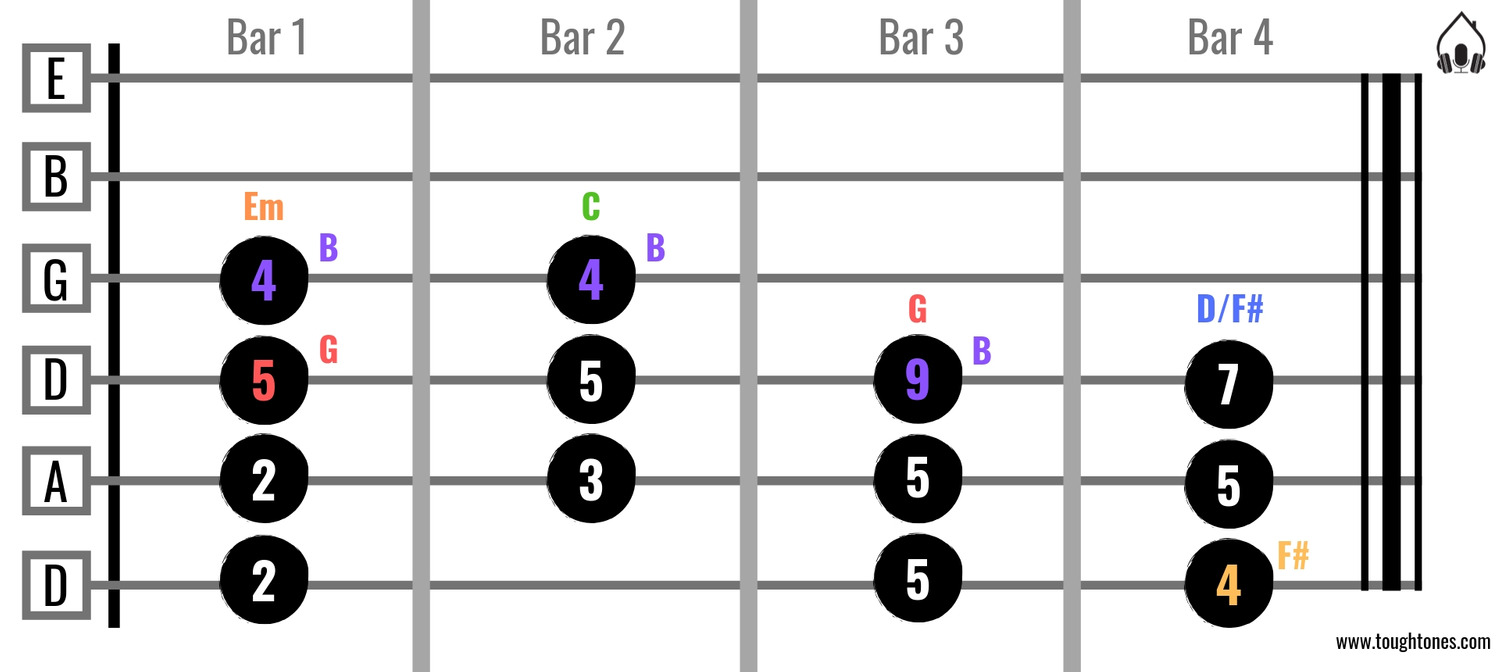
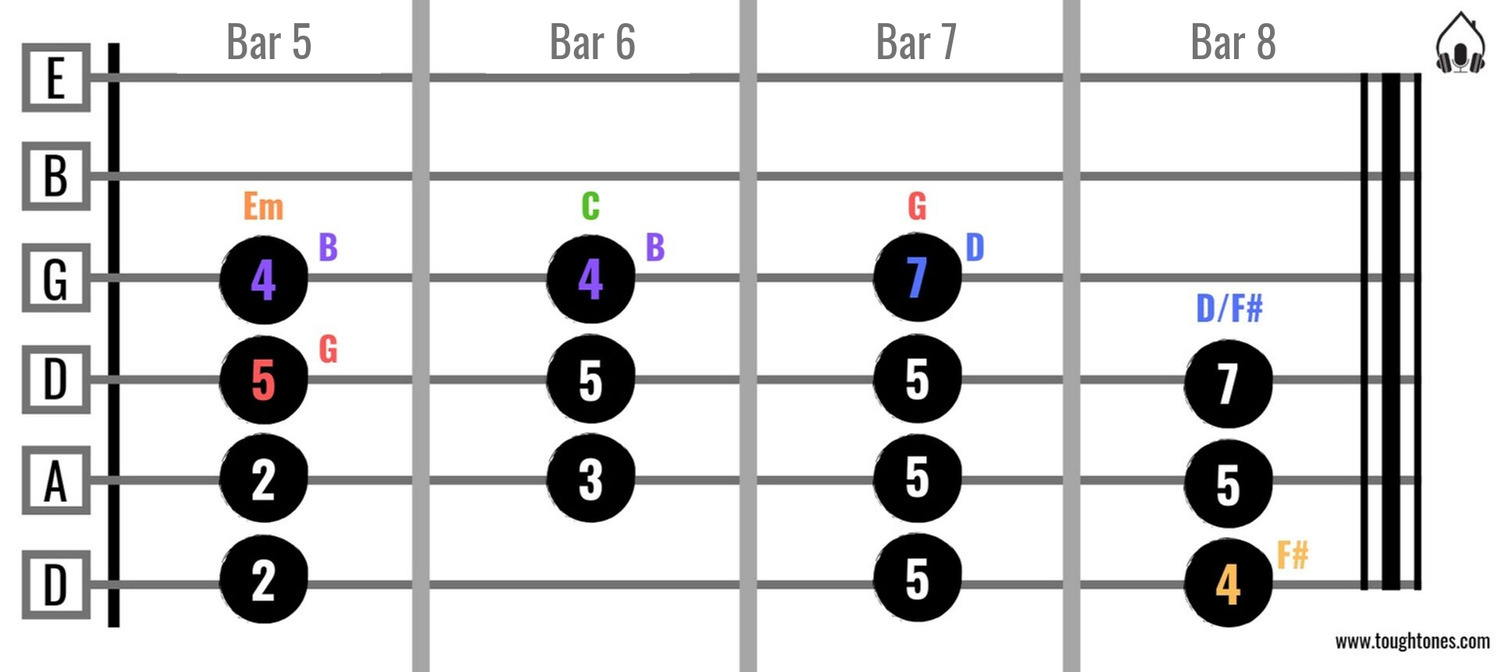
These are the added movements or the ”short riffs“ throughout the chord progression:
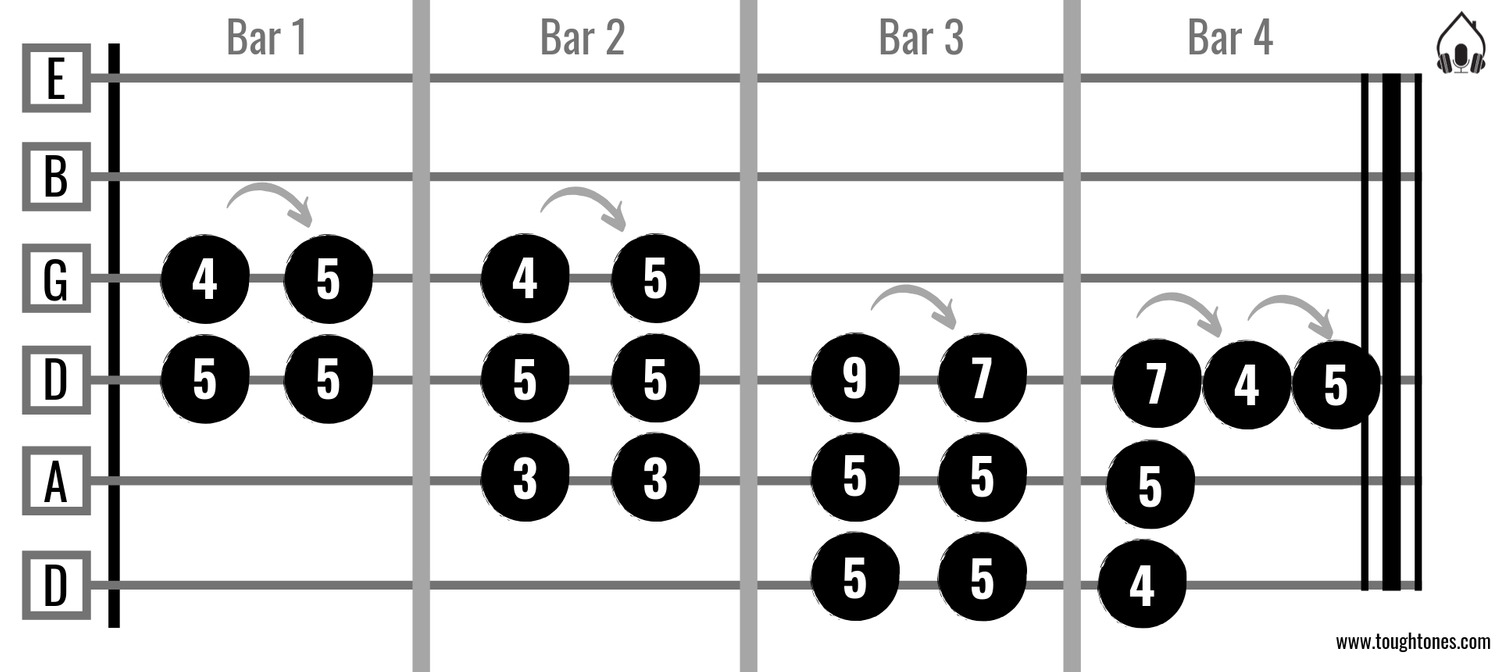
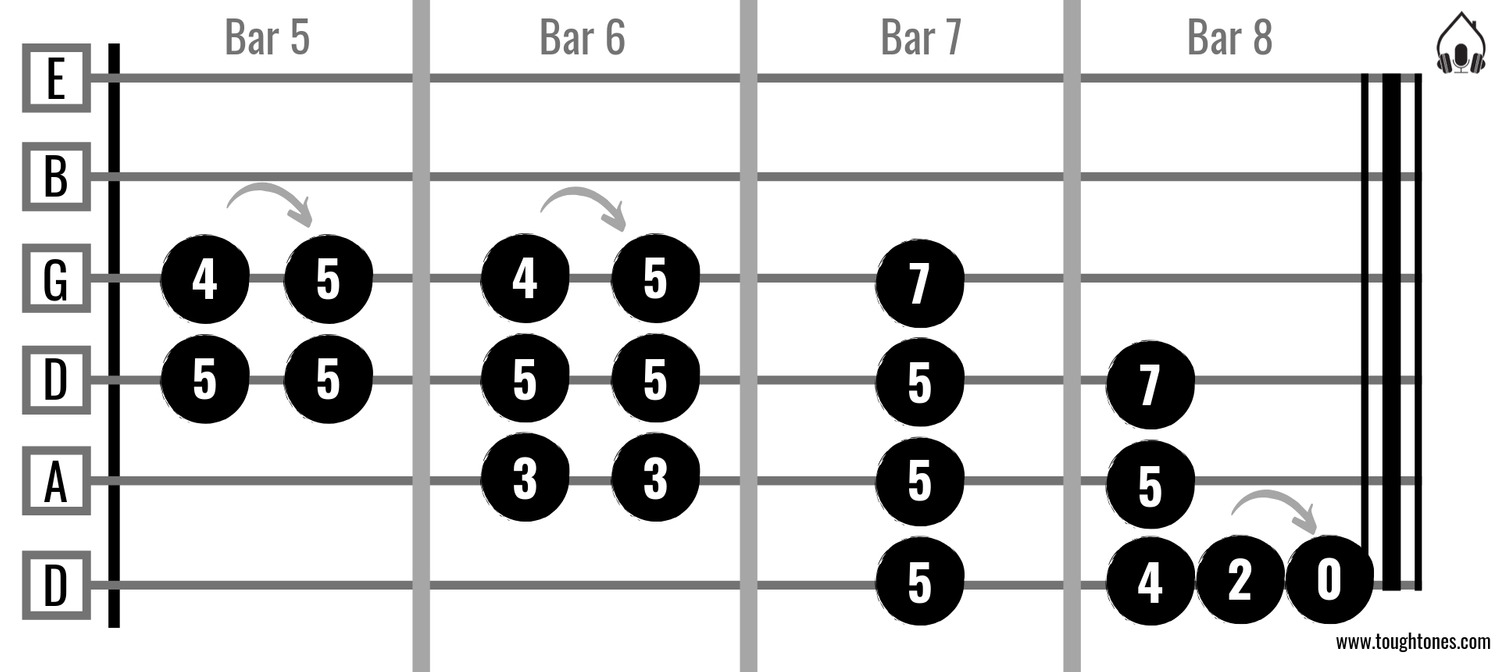
Next it’s time to build up on top of that with a simple and effective melody, that doesn’t steal the thunder from vocals. By focusing on the two aspects – following the rhythm and using strategic notes – I came up with this melody:
The Lead Melody
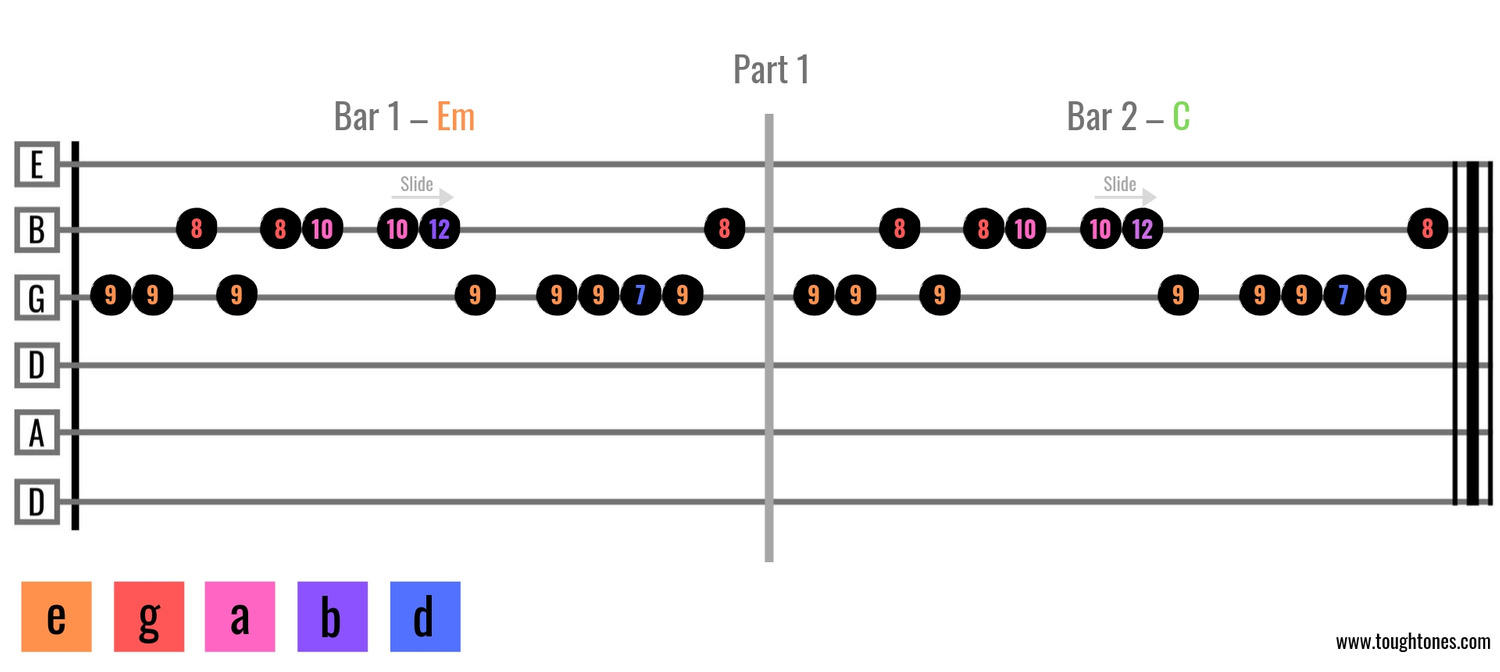
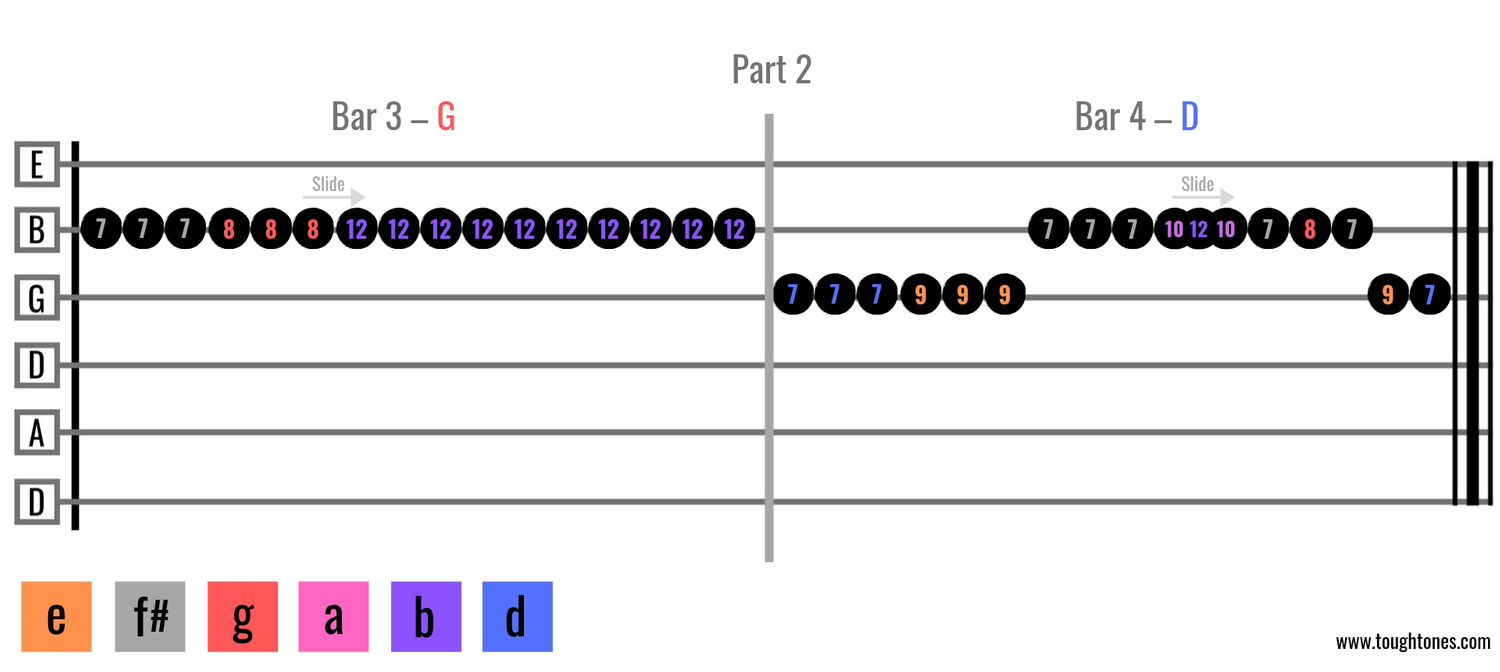
The whole melody is four bars long and it repeats two times during the chorus. You can divide the melody in two parts: The first part is repeating the same pattern during Em and C. In the second part, the rhythm is mostly the same during G and D, but at the end of the chord D, there’s a short lick that creates a transition back to the first part.
If you examine this melody through the points that were introduced before (following the rhythm and using strategic notes), you’ll notice that:
- A) The melody is following the rhythm of drums and rhythm guitars.
- B) The melody consists mostly of the notes from chords that are played underneath it.
It blends in quite smoothly with the chords, but it’s definitely adding a great deal of uniqueness to it. You can create this type of a melody in any key and chord progression. Use the same guidelines and you’ll get great results.
Adding Harmonies
We’re not done yet, as there’s something that can be added to the melody: harmonies. Just like emphasizing vocal melodies with harmonies, the same can be done with lead guitar melodies. Harmonies make a melody sound bigger, since there’s more notes on top of each other, playing at the same time.
Take a listen to the chorus with the added lead melody. Can you pinpoint a place where the melody could benefit from getting bigger? Where would it make the most impact?
I think the best place is where the chord G comes in, because at that point the rhythm changes to this fuller, bigger and more open sort of style. Let’s try to add some harmonies to the second part of the melody and see if they make an impact.
Hear that? I think the harmonies added some serious depth and size to the chorus. The harmony is rhythm wise exactly the same as melody, but the notes are higher. These are the added harmony notes:
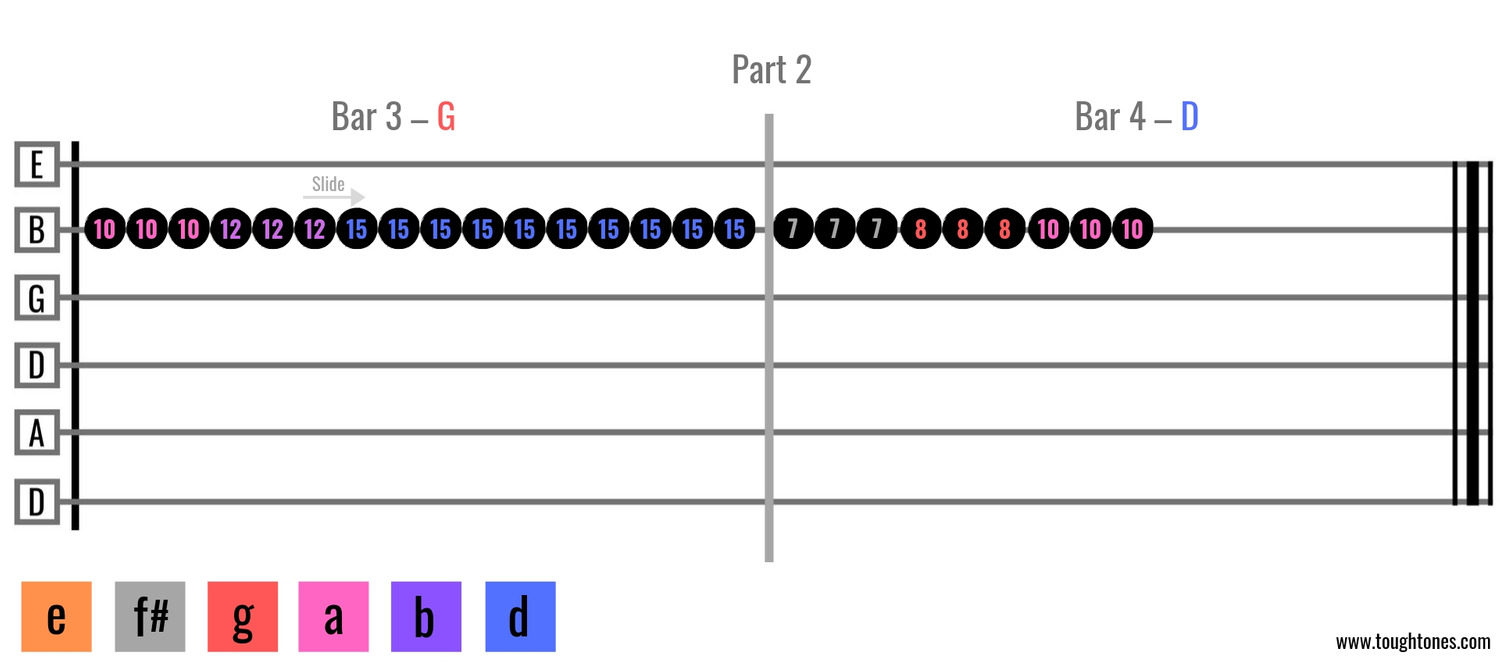
How to Create Harmonies?
Intervals
That’s a topic for another time, but I’ll try to explain briefly. Harmonies can be created with intervals. Intervals are distances between notes. They determine how many semitones (half steps (or in guitar land: frets)) are between notes. Different distances are named as different intervals: second, third, fourth, fifth, sixth, seventh and octave.
I’m using the third interval. It indicates the distance between my melody notes and harmony notes. There’s major third and minor third.
In a major third, there’s four semitones between notes, for example “g” to “b” (1. semitone g → g#, 2. semitone g# → a, 3. semitone a → a#, 4. semitone a# → a). In guitar land that would be from 8th fret to 12th fret in B-string. (1. semitone 8th → 9th fret, 2. semitone 9th → 10th fret, 3. semitone 10th → 11th fret, and 4. semitone 11th → 12th fret).
In a minor third there’s three semitones between notes, for example “e” to “g” (1. semitone e → f, 2. semitone f → f#, 3. semitone f# → g).
It’s confusing, for example in a major third, that even though it’s said there’s four semitones between them, there’s actually three notes (frets) in between. That’s because there’s four steps from the first note to it’s major third, but only three notes between them. It’s probably easier to count the notes in between than the steps. In major third there are three notes in between and in minor third there are two. It’s easy to get confused by this, that’s why I’m trying to be very clear.
Am I using minor or major thirds as my harmony notes? The answer is both. How do I know which one to use? From the E-minor scale: e, f#, g, a, b, c, d.
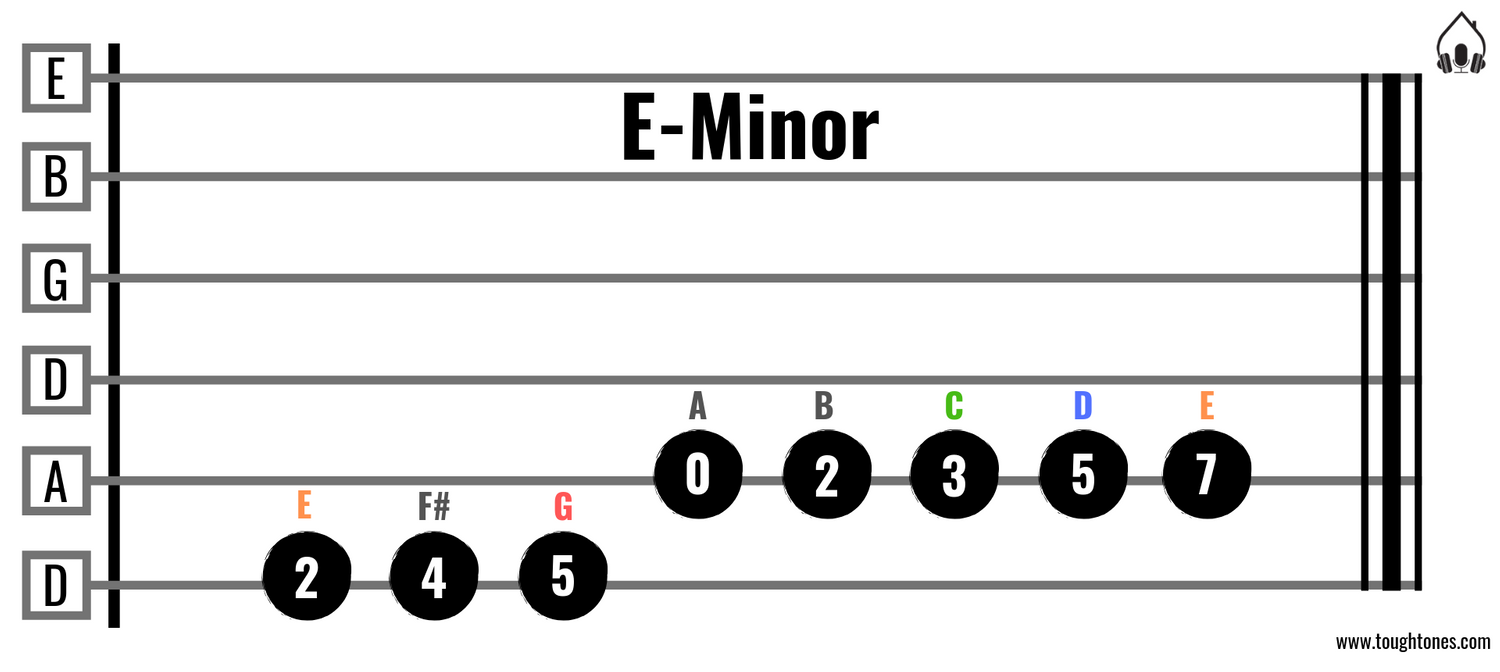
The melody and the harmony:


As you can see, the second part of my melody starts with the note “f#” (7th fret of B-string), whereas the harmony starts with the note “a” (10th fret). There’s three semitones between them (from fret 7 to 8 from 8 to 9 and from 9 to 10), making it a minor third interval. The next note in the melody is “g” and in the harmony “b”, which we already established to be a major third interval (four semitones between notes).
The Easy Approach
An easier way around this, is to use the E-minor scale. Just skip the next note in the scale and use the one after that as your harmony note. The melody starts with f# so, skip the next note in E-minor scale, which is “g”, and use the note “a” as the harmony note. “G” is the second note of the melody, so again, skip the next note which is “a” and use the note “b” as the harmony note. This way you’ll be using the right third interval every time. You probably hear it when you get it wrong, so you could do it by ear also.
Using a third interval is just one way of creating harmonies. You could use different intervals and combine them, so the possibilities are endless. Try the other E-minor scale notes and see what you can up with.
Summary
The point of this type of a melody, is to make the chord progression more unique and interesting, without getting in the way of vocals. You can create this sort of a melody by focusing on two main aspects: follow the rhythm of backing instruments such as rhythm guitars and use mainly the notes of the chords that are played underneath the melody. Finally, harmonies are a great way to add depth, size and interest.
Hopefully this post gave you some insights on how to spice up your chord progressions with a melody. Leave a comment or shoot me an email. Thanks for reading. Check also these useful guides to help you further with songwriting:
5 Steps to Create Music Faster (..and avoid the writer’s block!)
6 Step Guide to Realistic Midi Drums
You can get them for free today, no strings attached, enjoy!
Read also: “Understanding Chords and Keys – The Easy Way”,
“How to Form and Choose a Chord Progression?” and “Spicing Up Power Chord Progressions”
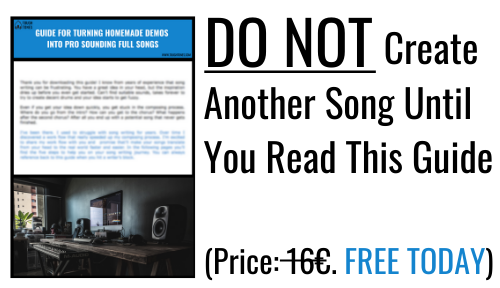
1 thought on “Unique Chord Progressions With Simple Melodies”